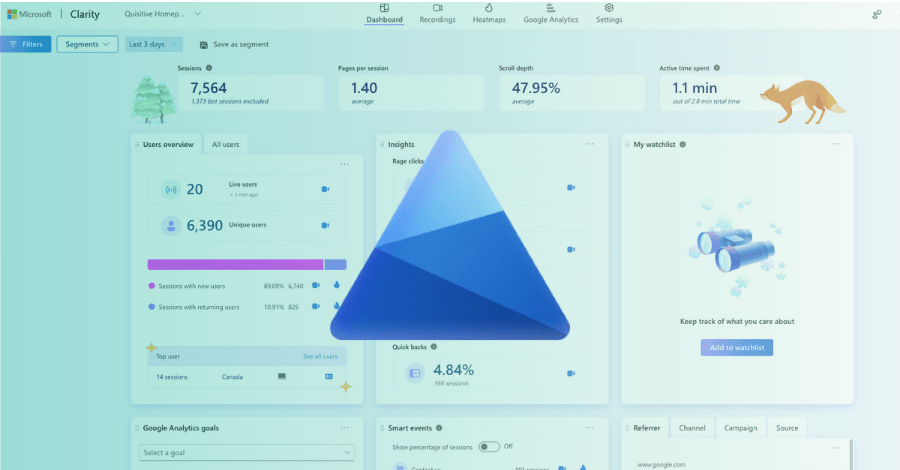It’s no secret. Azure Data & Analytics can be an incredible conduit for realizing business value, implementing powerful new solutions within the cloud, and gaining access to vast amounts of valuable data that is generated every day through your organization’s business activities. With the power of Azure Data & Analytics on your side, you can implement new business applications that can: stream and interpret massive blocks of data, generate powerful reports for better decision-making, see the impact of decisions in real-time, and much more.
There has been a fundamental shift in the way successful businesses scale and process their data which is, in many cases, one of their most valuable assets. Designing and implementing a platform that can capture—and leverage this data in meaningful ways, can be a daunting yet extremely rewarding task, but is a crucial step in a successful digital transformation strategy.
Here are some common questions your team may ask when brainstorming an implementation of Azure Data & Analytics for your organization:
- How do key stakeholders within the organization work with IT to capture and define business use cases and user stories for the technical platform?
- How should the governance and foundation work of our new data platform be established? Who will be responsible for maintaining this platform and ensuring security and best practices in its day-to-day use?
- How do we expand and build on crucial applications to support capturing and utilizing more business data?
- Within the new platform, what forms of automation can we implement to decrease costs, improve efficiency, and augment existing capabilities?
- What out-of-the-box tools are available to us to expand our capabilities with minimal investment?
- How do we accurately predict and control costs associated with the new business platform and ensure the integrity of our governance is maintained?
- Who will be responsible for ensuring our business applications are maintained within the new platform?
The list of crucial questions in this stage can seem endless and exhaustive, but it only highlights the need for careful and deliberate decision making when implementing a new technological platform of this type regardless of the planned scope. Regulation compliance, security best-practices, and migration framework contribute to any successful cloud strategy, whether it’s designed for a small business or a large corporation. Whether you decide to work with a trusted and experienced partner or take on the challenge internally with your team, asking and answering the right questions and being thorough in all steps of planning and implementation is crucial to maximizing your chance of success from the start.
Building your Azure Data & Analytics platform
Without proper knowledge or experience, planning and building your organization’s Data & Analytics platform in Azure without professional aid can take months or even years. Dragging timelines, uncertainty in costs, and other factors can delay implementation and reduce confidence in a successful cloud migration plan when there is limited or non-existent experience to lean on.
At Quisitive, we have been working as a trusted partner to help migrate customers of all sizes to Azure and work with them to realize immediate business value from their investments in the cloud.
Whether you are working with a trusted partner or pursuing the cloud platform build or migration alone, the importance of cloud adoption framework cannot be overstated. This framework is a living artifact and represents a reliable source of truth in your cloud strategy. It is a “true north” when considering new opportunities in the cloud and understanding how your organization’s overall IT strategy is adapting. Bolting it on after the build or migration rather than baking it into a cloud strategy from the start will reduce your chances of success.
Just because the cloud adoption framework is defined from the start doesn’t mean it can’t evolve over time to include more stringent and defined criteria as your organization matures and expands in its cloud strategy.
Extensive and carefully planned migration framework ensures your organization has put proper consideration into the numerous challenges and obstacles of a successful cloud migration strategy and demonstrates a fundamental understanding of how the platform will be used to solve business challenges and achieve new goals as they emerge. This work, at least on a foundational level, needs to be done before any VMs are spun up, or any data is migrated to Azure.
Getting into the actual build and deployment of the platform, your organization needs to be able to estimate the right-sized resources your business will need within Azure. Allocating too many resources across Compute, Storage, and other areas of Azure can drive up costs and cause your tenant to burn too hot, diminishing the business value that could be achieved from a properly sized and implemented data and analytics environment. Allocate too few resources and your platform may slow, drop tasks, and place a constraint on associated business processes.
Constant adjustments, automation tweaks, and refinement of cloud strategy can ensure ongoing improvement and optimization within the cloud. The result? A *reduction* of uncertainty, unpredictable cost, and unoptimized resource utilization.
Working with a trusted partner to perform a cloud assessment can be an incredible first step to ensure ongoing improvement and optimization within the cloud from the onset.
Know your options, and unite them with your business use cases and user stories
Within Azure, there are several out-of-the-box Data and Analytics products that can be added to your existing or newly acquired subscription with little to no additional cost. Some of these tools and applications can be custom-tailored to your organization’s needs, and others give immediate access to new capabilities including how your business is able to use and interpret data from different sources.
You can also build your own custom solutions to address your business problems head-on, using some of these available products and services as building blocks or framework to guide your efforts. Self-guided continuous improvement and exploration in the cloud, while *costly*, can lead to refined strategies and capabilities within Azure—allowing your team to grow their understanding of Azure over time.
Whichever route you pursue, it is important to tie the technology to the fundamental business use cases and user stories which it is trying to solve.
- How can this solution help key stakeholders make better decisions and respond to market data on a more regular basis?
- As a manager, how will this platform help me better track the performance of my team against quarterly business goals and planned product enhancement deployments?
Always look to understand the ‘why’ behind any technological solution and understand the ties to crucial business use cases and user stories that drive success to the organization. In this case, business and technology can go hand-in-hand, and when used and evaluated together, can have powerful results. This is the premise of the Azure for Business blog series: to help you understand new ways of considering how business and technology can interact to create exciting new synergies that yield incredible results.
In conclusion, planning an Azure Data & Analytics implementation for your organization can be a daunting task, but there are numerous steps that can be taken to better ensure success from the start. Whether your organization is taking on the migration and implementation singlehandedly or working with a trusted partner, make sure to include proper consideration for cloud migration framework, security and compliance, and well-defined governance.
Fully Functional Azure Data & Analytics for your organization in just 30 days
Looking for a trusted partner to guide you in your implementation or just looking to learn more about the potential business use cases of Azure Data & Analytics?
Lean on Quisitive’s expertise for your implementation: our On-Ramp to Azure Data & Analytics program gives organizations a fully functional, custom-tailored Azure Data & Analytics platform in just *30 days.* Microsoft will fund a percentage of the program cost to help you realize immediate business value from your investment. Learn more about the program and see if your organization is eligible for Microsoft funding right here.

;)


